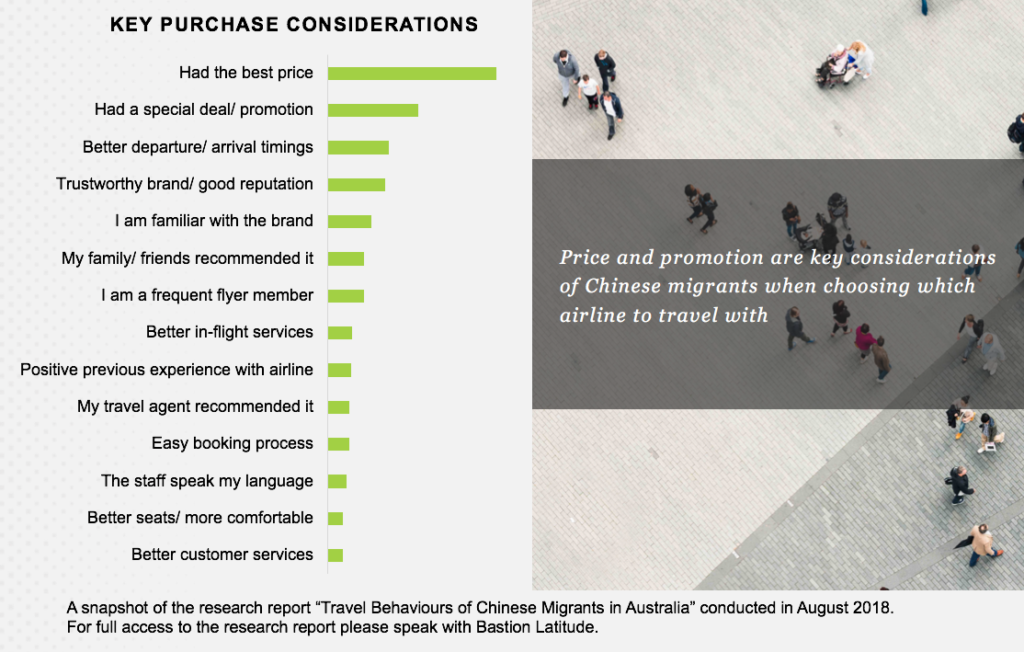
Celebrating Lunar New Year with handwritten Chun Lian 春联




Bastion Insight’s Head of Cross-Culture, Isabel Zhang and a group of multicultural business leaders brought culture to Melbourne Cup this year in an effort to show that The Race That Stops The Nation can encompass all constituents of our growing population.
With over 7.3 million Australians born overseas, Australia’s heritage events can no longer afford to only appeal to the traditional version of the population. Maintaining an awareness of cultural diversity is key in ensuring recent immigrants feel welcomed and motivated to attend major events.
Victoria Racing Club is a great example of this, having recently updated its famously strict dress code to include cultural attire. This adjustment enabled the Bastion Insights Cross-Cultural team of proud Chinese Australians to attend as ‘cultural ambassadors’ to represent both countries they identify with at this year’s Melbourne Cup.
For over 150 years Fashions on the Field has been a historical part of Melbourne Cup and for the first time ever, this year included entrants in their traditional cultural attire. Isabel and 6 of her colleagues entered the competition and although not winners, it was a historic moment.
“We feel privileged and proud to represent our culture and heritage in our traditional outfits. And thank you, Myer, for having us and giving us this opportunity. Even though we didn’t win, we felt profoundly proud,” said Isabel Zhang.
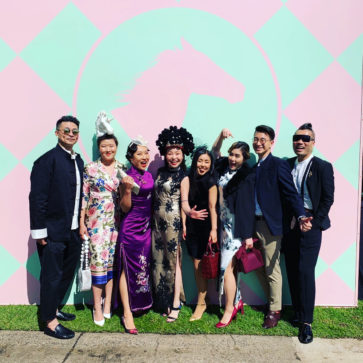
The hardest part of attending the Melbourne Cup in traditional attire was the fear of embarrassment of not fitting in the expected “norm”. Our studies show that 1 in 5 Chinese migrants do feel out of place in Australia, and 4 in 10 feel Australian but don’t feel that others would see them as Australians.
“As much as we feel we are Australians, we were feeling rather unsure and overwhelmed at times standing out from the crowd for this meaningful cause. Having said that, we thoroughly enjoyed this fabulous day and we felt extremely welcomed and belong. It’s wasn’t easy but it did end up feeling great coming out of our comfort zones and being proud of our heritage,” said Zhang.
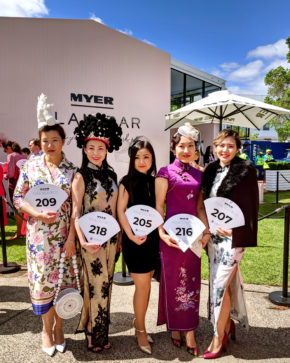
Events are all about experience and there are definitely brands making a more conscious effort to engage culturally diverse audiences. The AFL has once again locked in their annual match in China, with teams playing in Shanghai in 2020.
In 2018 the Australian Open partnered with leading Chinese Baijiu brand Luzhou Laojiao, enhancing the diversity of food and drink experiences at the AO. Marketing to different communities requires more than just simple translation; Formula 1 Australia works with the local Chinese community to ensure all their ticketing and packages are easy to understand.
With so many brands spending big overseas to appeal to a new market, how can you and your business capitalise on Australia’s local population? Chinese Australians influence and shape perceptions of brands to the Chinese in China. There is a symbiotic relationship with both the local and native Chinese, seeking to validate their authenticity with one another. The rapidly growing multicultural population in Australia presents an enormous opportunity for Australian businesses. But more businesses still need to develop the skills and knowledge required to capitalise on the opportunity.
“As your unpaid brand referrers and advocates, the result of engaging them locally will amplify your brand to the families and friends they have back home. That will create much more ‘stickiness’ to your brand and your marketing efforts!”
The Chinese community, in particular, are proud and don’t react lightly to embarrassment or insult. Dolce and Gabbana are still struggling to overcome a backlash that erupted in November last year over a tone-deaf marketing video and derogatory comments from co-founder Stefano Gabbana about the Chinese. A boycott on the mainland followed that threatened to eradicate one of fashion’s biggest names.
Hosting a culturally inclusive event isn’t just about avoiding the negative, it’s giving a platform to all cultures and ensuring that all members of Australia’s changing population are represented and welcome. Bastion Insights’ Cross-Cultural team is here to help. Get in touch before organising your next major event.
____________
Want to know more about Cross-Cultural Insights? Get in touch with Bastion Insights’ Head of CCI, Isabel Zhang or read our blog on how to create a Chinese-targeted marketing strategy.

There’s a lot of talk about the opportunity for Chinese tourists and implementing your marketing campaigns directly in China, however, what is often overlooked is a huge opportunity for businesses to engage with the Chinese community here in Australia.
People with Chinese ancestry represent a large and growing audience right here in Australia. According to the 2016 census, there are 1.2 million people with Chinese ancestry living in our nation, up from 557,000 in 2001. That’s a 115% growth rate from 2001 to 2016, and it’s unlikely to slow down.
In addition to sheer size and growth, Chinese migrants tend to have high disposable income combined with well exposed and informed, new middle-class mindsets. We are now at the tipping point where this is an audience that businesses can’t afford to ignore.
Chinese in Australia are a very diverse group. We are talking about a mix of Chinese who are born in mainlaind China, Taiwan, Hong Kong or South East Asia. Of the 1.2 million, over half are born in mainland China but that number has boosted since 2008. This shift has had a profound impact in shaping the local Chinese consumer landscape.
Any good marketing starts with good strategy and an understanding of your consumers, and marketing to Chinese in Australia is no different. It’s not just a case of getting on WeChat. One size does not fit all!
One of the key barriers for the new Chinese migrants is to navigate through the social system in Australia. There are some fundamental differences in our social and government systems that are extremely challenging for this cohort. For example, the concept of self-service is new to Chinese immigrants; many terminologies such as ‘excess fees’, and ‘out of pocket’ are alien to Chinese migrants even when translated into Chinese.
Chinese, like many Asian cultures, are very collective. There are many unspoken/subtle rules which apply day-to-day as well as in business. Cultural appropriation and its application in marketing activation is one of the key challenges that many brands and organisations are facing.
4 in 5 do not speak English as their first language at home. In fact, based on our research half of our Chinese migrants would “like to see more Australian companies communicate in Chinese”. Other main challenges for brands include how to best articulate an idea/message in the context of a different language. From many studies we have conducted, we know that the risk of getting it wrong can have a long-term effect on the brand, particularly the sensitivities around tone.
Chinese are generally very switched on when it comes to technology and social media platforms. Most importantly, they favour non-mainstream media platforms. Tech giants such as Tencent, Alibaba and a handful of others, enable Chinese in any part of the world to stay close to what’s happening at home. This means they not only consume the same information as the Chinese in China, they also influence and shape perceptions of brands to the Chinese in China. There is a symbiotic relationship with both the local and native Chinese, seeking to validate their authenticity with one another.
Australians generally emphasise value for money whereas the Chinese place a high value on the trust and credibility of the brand.
So, how well do you understand the Chinese audience in order for your brand and business to address these differences? How are you using this knowledge to shape your China strategy?
Yes, it is a no brainer to target the 1.4 million Chinese tourists to Australia each year, who spent $11.7 billion here in 2018. However, marketing opportunities diminish when these tourists leave the country. The question then is, which cohort gives you a more sustainable and longer-term return?
The rapidly growing Chinese population in Australia presents an enormous opportunity for Australian businesses. But more businesses still need to develop the skills and knowledge required to capitalise on the opportunity.
Over the next few months, we will be discussing a few hot topics raised by our clients: Customer journey differences, impact on parallel economy, is KOL still a viable channel? Could I just translate my current website? Keep an eye on the Bastion Insights blog or join our CCI mailing list!

Target your marketing to a profitable, growing cohort; Chinese Australians. Head of Cross-Cultural Insights, Isabel Zhang discusses the key tips to consider when engaging with the Chinese in Australia.
There’s a lot of talk about the opportunity for Australian businesses to export to China (and rightly so, the export opportunity was 110.4 billion in 2016/17). However, often overlooked is a huge opportunity for businesses to engage with the Chinese community here in Australia. People with Chinese ancestry represent a large and growing audience. According to the 2016 census, there are 1.2 million Chinese people living in Australia, up from 557,000 in 2001. That’s a 115% growth rate and it’s unlikely to slow down. In addition to sheer size and growth, the spending power of Chinese migrants has been well documented. All summed up, this is not an audience that businesses can afford to ignore
Engaging with the Chinese community in Australia is easier said than done. It requires a tailored approach based on a keen understanding of their unique needs.
A study conducted by Bastion Insight showed not many companies are getting this right today. Only 39% of Chinese migrants agree that Australia companies ‘understand their needs’, yet 66% of Chinese migrants state that they “would prefer to buy brands that show they understand the Chinese community”.
So, how can businesses get this right? Below are three key tips to consider when trying to engage with this segment.
Full disclaimer, I work for a research company. So, yes this tip is self-serving, but it is the truth. To engage with this audience you need to have a deep understanding of Chinese migrant’s needs in the context of the products and services you offer. Gather as much research and become knowledgeable about your Chinese customer’s background. This is critical to help craft an effective data-driven strategy.
This sounds easy enough, but conducting research with the Chinese community can be challenging. Chinese migrants are not easy to reach via traditional market research (underrepresented or not represented on online research panels). Further, there are varying levels of English language proficiency, and most Chinese migrants do not speak English at home. To really understand this segment research needs to be conducted by native speaking moderators and surveys need to be translated into Mandarin.
Finally, experienced researchers who understand this segment know that the integration of cultural context is important in every stage of the research process. They understand that the Chinese interpret some concepts differently than others. They also know how important it is to dig deep into the insights to uncover behaviors, mindsets, and attitudes worth noting and those that are particularly sensitive. Dolce & Gabbana may not have thought it was important to understand the changing cultural landscape but it appears to have been an expensive mistake. Reuters reported that the brand may lose as much as half a billion dollars in revenue following an outcry over racially offensive posts on their social media accounts.
In order to accurately represent the voice of the Chinese migrant consumer, marketers should be asking if the research fully captures the truth of this segment. Ask the following questions:
If we want to engage the Chinese community we need to be reaching them through the right channels. There are three ways to think about this. What media are they consuming, what touch-points do they use and how do they buy products/ services in my category?
For example, a recent study about travel by The Golden Voice community found that 39% of Chinese migrants use Chinese travel sites when researching holidays vs. 16% that use English travel sites. This same study found that over half (59%) are “much more likely to buy from a shop that offers WeChat pay”. Both of these examples demonstrate the importance of tailoring your channels (both media and payment) to better cater to the Chinese community in Australia.
The majority of the 1.2 million people living in Australia with Chinese ancestry are 1st generation migrants – only 25% were born in Australia. Chinese heritage and traditions are still a big part of their identity. At a basic level, companies need to cater to this via in-language communications. We’ve found 82% speak a language other than English at home with Mandarin (46%) the most popular, followed by Cantonese (22%). This is supported by 51% of Chinese migrants stating that they would “like to see more Australia companies communicate in Mandarin”.
Beyond creating in-language communications companies can also include references to Chinese culture (e.g. use of Red or Gold) and recognise cultural events (e.g. Singles Day or Lunar New Year). 49% said they like it when Australian companies celebrate Lunar New Year. It doesn’t have to be an overt message but can simply act as a nod of understanding of Chinese Culture.
We go to where they are. We host our Golden Voice community, a one of kind research platform focusing on Chinese Australians, through WeChat platform. Everything is conducted in their native language, Mandarin. This is to ensure we uncover the cultural truth in the most authentic way.
Interested in learning more about marketing to Chinese Australians? Read our blog; How to Create an Effective Chinese New Year Campaign.
Want to hear more from Bastion Insights Head of Cross-Culture, Isabel Zhang? Read about her leader journey in A Leader Among Us.

Bastion Insights’ Isabel Zhang was invited to present at Infinity Elite Club’s ‘Asian Women in Leadership: Breaking Through Barriers’ to share her experiences as a female leader in business. Below, Isabel discusses further what’s shaped her into the leader she is today.
There are a lot of people managers out there, but they’re not necessarily all good leaders. I like to think that managing is a role that’s given, and being a leader is earnt. It doesn’t matter who you are, or what your position is – a global CEO or a junior team member – anyone can lead.
I am a true believer of ‘leading comes from within’. A leader elevates, motivates and brings out the best in people. I’m not sure I see myself as a leader but try my best to support, and bring positive impact to the people around me in this way.
Moving across countries, from China to Malaysia to Singapore to Australia, my cross-country career path and personal upbringing has shaped my passion and what I do now. I feel extremely privileged to work with different cultural diversified communities in Australia (and beyond) and be an advocate of cultural understanding in the business context.
However, I found the initial transition difficult – Australia is a melting pot of all different cultures and yet, it is not as diversified as it should be. Australia felt a little insulated at times – how could I use my skills?
I had to work harder and constantly felt I had to prove myself. I often questioned – what would people notice first? My age, culture or gender? But one thing for sure, it was rarely my experience or knowledge. I had to try harder to be noticed and taken seriously. It’s important to find a balance of proving yourself to others, but still staying true to yourself.
At Bastion Collective, I often work closely with different parts of the business; for example, the Bastion China team. I can certainly resonate with the young team, having been both an immigrant and graduate myself. I understand their struggles and the assumptions and misunderstandings they sometimes experience from their Australian colleagues.
Bastion Insights is a flat company, with no hierarchy and no job too big or small for any team member. This structure is so new to a lot of Asians, Chinese in particular. We are taught to stay humble, polite, and not to trust or share your true thoughts to people that you are not close to.
To succeed in the workplace you have to learn to use your voice and challenge ideas constructively. I am a bit of ‘wild horse’ as I’ve always had a very unusual upbring and now I try to teach people from both sides of fences to overcome these deeply ingrained cultural learnings – I am proud to be that ‘bridge’.
I grew up in army camps. My father was a General in the military for 35 years and worked 10 years in a commercial financial institution. My childhood was intense; we’d travel a lot and he was very strict. But he’s the most inspiring person I’ve ever met. He could fight in wars and lead, but at the same time, he would write beautiful literacies, poems, calligraphy, taught himself English in the 1970s. He has never stopped learning and trying to better himself. I grew up watching him earn respect from everyone around him in both military and commercial sectors. We don’t always get along, perhaps because we’re so similar (both very stubborn!) but I’ve always respected him. I don’t define my life by his success, but his integrity and resilience has certainly helped shape my values.
Having seen so much inequality all over the world, I want to stand up for anything unfair. That’s one of the things that I love about Australia, the ‘everyone has a fair go’ attitude. Of course, there’s still a lot of imbalance here, but that kind of attitude makes Australia feels like home.
Cross-Cultural Insights and the work we’re doing here at Bastion Insights isn’t just about Chinese Australians. It’s about understanding all the different cultures that Australia houses. As I continue to learn about our differences I grow more curious about people and their cultures. What connects us? How can I help remove the barriers? The need to understand drives me everyday both professionally and personally. I want to connect people through their differences, after all, we are more similar than we think!
Sleeping in peace. Having good and healthy relationships with friends and loved ones. Inspiring others. Contributing back to my community.
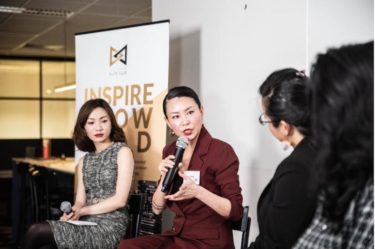
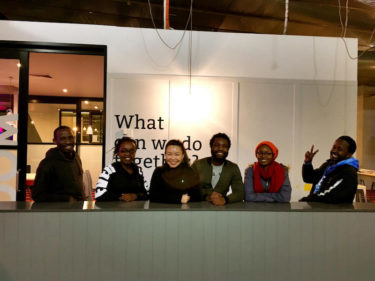
This interview has been edited and condensed.
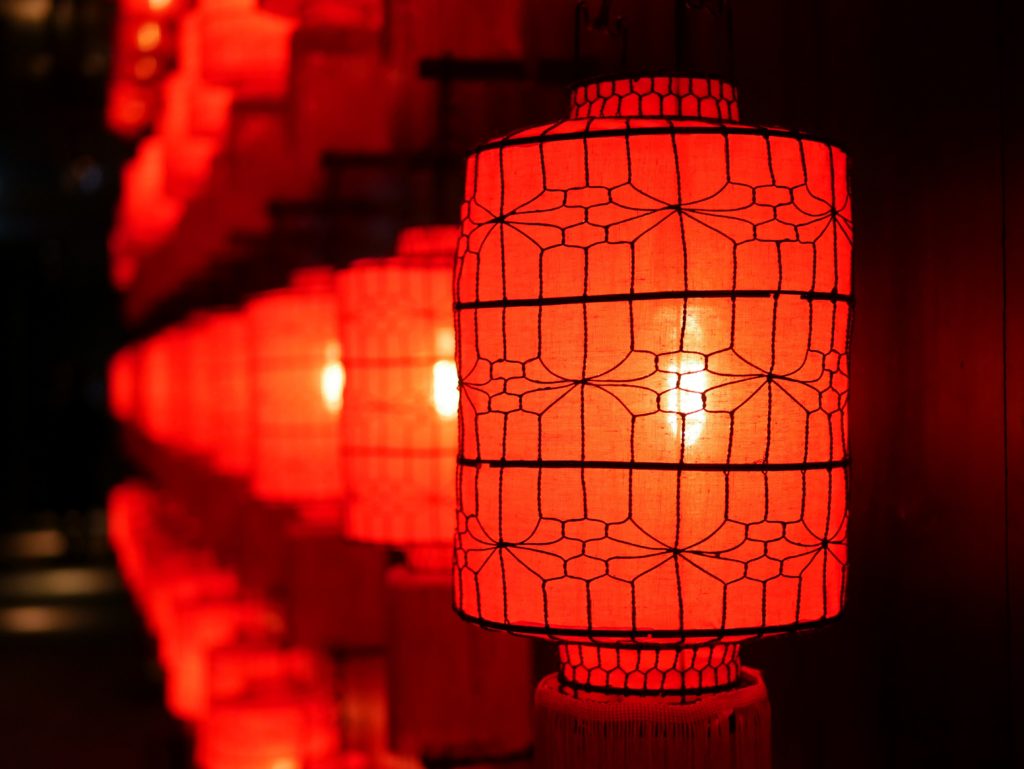
In recent years, in Australia, there has been increasing efforts to be more inclusive of celebrations from other cultures. About 1.5 billion people around the world celebrate Chinese New Year in its many forms, making it one of the most revered occasions in the world. In Australia, we have over 1.2m people of Chinese heritage living and working and this number continues to grow.
Our research shows that Chinese Australians would like to see more CNY campaigns and promotions from Australian brands. Organisations have already started tapping into this opportunity, with some brands succeeding and capturing the hearts of the Chinese and others missing the mark completely.
Many struggle to optimise their marketing investment, not using effective media channels, or unable to create culturally appropriate campaigns. In order to have a meaningful engagement with the Chinese audience, and therefore execute a successful CNY campaign, it is necessary to really understand what CNY is about and what the Chinese people, specifically those in Australia, do over this period.
Research clearly shows that Chinese in Australia are more likely to buy brands that make an effort to celebrate CNY. Nearly 6 in 10 Chinese Australians claimed to have acted (visited or bought something from the brand) due to their CNY related promotions and efforts.
A creative CNY activation that missed the mark was the Year of the Pig display at the Queen Victoria Building in Sydney.
QVB combined two important Chinese elements to celebrate Chinese New Year in 2019. In Chinese culture, pigs are a symbol of wealth and the Year of the Pig represents success in all avenues of life. Peach blossom trees are a popular motif often depicted in Chinese art. The tree itself was first cultivated in China more than one thousand years ago and is today revered as a symbol of longevity, prosperity, and romance.
Reaching six metres tall and spanning more than four metres in diameter, a peach blossom tree was positioned beneath the historical central dome of QVB with thousands of tiny felt piglets replacing what would have been the blossoms.
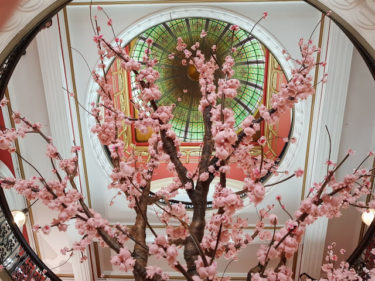
However, the activation confused the Chinese as, unbeknownst to QVB, a traditional Chinese saying is ‘男人靠得住,母猪会上树’ or ‘A man is reliable/trustworthy when a sow can climb a tree’.
The public took to social media:
“A weird way of incorporating the Year of the Pig into the peach blossom. The west has a weird taste of aesthetic.”
“The pig can even climb the tree lol”
Understanding cultural nuances is integral when creating a successful campaign and this creative take on a CNY activation needed cultural context to avoid confusing the target audience.
To celebrate Lunar New Year the National Gallery of Victoria presented a day of performances, workshops, and more exploring Chinese art and culture. Workshops included traditional paper cutting and good luck couplets, which provided the audience with an authentic deep dive into Chinese culture.
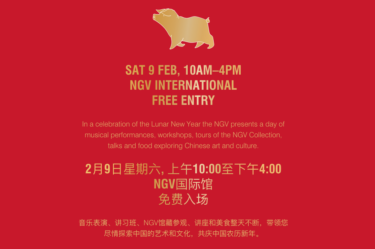
It engaged the Chinese community including recent migrants. The campaign also targeted Chinese tourists with NGV creating a strong digital presence via WeChat and Weibo. NGV employees wished the Chinese community a happy Chinese new year in Mandarin on Chinese social media and on the NGV website. The messaging felt well thought out and, most importantly sincere.
Referral and word of mouth are key aspects of Chinese culture. Our research shows 8 in 10 Chinese in Australia posted on their social media or told others about the CNY promotions they saw, proving that the Chinese in Australia can be brand advocates. Chinese consumers are heavy users of social media and they talk to friends and family locally and as well as those back in China.
There is always a risk for brands and businesses to get it wrong. QVB had all the right CNY elements but put together, the message was changed completely in a Chinese cultural context.
To make the most of this important cultural event businesses need to create shareable content, not just digitally but that also allows Chinese Australians to become brand advocates, spreading your message through the community. But most importantly, engage with a Cross-Cultural expert who can translate your campaign and help you tap into the Chinese community in a meaningful, engaging way.
Bastion Latitude’s Head of Cross-Cultural Insights, Isabel Zhang and CEO Dianne Gardiner filmed a webinar, ‘Learn How to Tap into Australian Chinese Consumers’ that dives further into how to create positive marketing opportunities from key Chinese events and how to avoid promotions that don’t align from a culturally accurate perspective.
For a copy of the webinar or further information on how your business can take their targeted Chinese marketing to the next level, get in touch with Isabel Zhang – isabel.zhang@bastionlatitude.com.au

Growth Faculty sat down with our CEO, Dianne Gardiner, to talk about the challenges and rewards that come from running a market research firm and the launch of The Golden Voice, a one-of-a-kind Chinese Australian research community.
Dolce & Gabbana is in major damage control for its ad campaign. Vogue and People magazines are also in the bad books for naming gaffes. Treating the Chinese consumer with disinterest or contempt is backfiring on brands worldwide, and it sounds a warning bell for Australian businesses.
Dianne Gardiner, entrepreneur, and CEO of market research firm Bastion Latitude has a mission to help us deeply understand the 1.2 million people with Chinese ancestry living here in Australia (a 115% growth rate since 2001).
Her team has launched the Golden Voice Community, the first, local, and independent in-language research community in Australia comprising more than 5000 Chinese Australians.
In 2016, eight years after starting my business, I decided to sell a majority stake to Bastion Collective. Most people interpreted this as an exit, but I actually did this with the intention of growth. While many business owners would be afraid they were giving up control, within the Bastion Collective model this is not the case. I am CEO and I continue to run the company today, but the difference is I have support around me to help it grow.
Three years on, the 20% stake I retained is worth more than the 100% I owned when I sold the majority stake. Through becoming part of a larger group, I was able to scale. I’m now looking and planning things I could never have imagined doing when I was a small business owner with a small team trying to do everything on my own. I am now truly able to work on the business, not in it.
Our name originally was ‘Latitude Insights’. When we became part of the group, we changed our name to Bastion Latitude. (Recently we finally said finally goodbye to ‘Latitude’ and renamed as Bastion Insights)
Our industry has changed a lot. Over the 10 years of business, we have seen the evolution of social media, the growth of data, UX and now CX. Human-centered design has evolved and ‘designers’ and agile teams are doing research. The role of market research has evolved from being about collecting primary data to help business decision making. To melding data from different sources to demystify complexity, and improve the experience of brands, products, and society.
I’ve been a researcher for 20 plus years, and half of my work is social research, working with the government and community service organisations. And, typically part of that work is a multicultural component, and in all honesty, it’s not done very well, because those communities are harder to find, the research is costly and harder to do.
There are language barrier issues, they’re more reserved, and they’re not a community that’s used to voicing opinions; they’re just not used to being researched. They want a voice, (but) it hasn’t been the easiest thing to set up. We had to start from scratch and we’ve built it in a different way than we would from our more mainstream research tools. WeChat is very much integrated in their lives, so that means speaking to them in Mandarin or in simplified Chinese, adding a whole new layer and complexity. It’s been a fantastic journey so far.
The reality is we always call them the Chinese consumer, but they’re not all the same. With so many differences within the Chinese community, such as where they’re from; there are 200 plus dialects in Chinese language, it gets complicated when you dig under the surface. There is definitely the language barrier, they may speak good English, but speak Mandarin or one other dialect at home, and that’s the language they think in.
When you’re trying to research and understand at an emotional level, you really need to be doing that in their native language. Otherwise, you’re skimming the surface, and missing the nuances there.
If we look at things from our framework, we make assumptions about what’s important. One difference is that their culture is one of face value, it’s very important, they are not necessarily going to tell you to your face; you’ve got to dig underneath because sometimes what they say and what they think are two different things. In China, the Government has a very different role than it does here. For that reason, the way in which you approach asking about things, and how they seek out information, is going to be different.
A recent bad example was Dolce & Gabbana’s campaign (the luxury Italian fashion brand marketing campaign showed a woman struggling to eat pasta and pizza with chopsticks). They so got it wrong. This is one thing some people sometimes can get wrong, the humour and making fun of a culture. There’s a very fine line particularly among the Chinese in terms of their heritage and things you can make fun of, and others you can’t. I’d hate to guess how much D&G have lost in business, but it may have eroded billions of dollars off their brand.
Ultimately it’s no different to any of us. They want to be included, want to belong, want to be part of something, don’t want to be misunderstood, nor misperceived, nor misrepresented. Things like Crazy Rich Asians give perceptions of the Chinese consumer, and they’re not all like that, that’s for sure. So, in the end, don’t stereotype. Try to understand it from their perspective, and give them a fair go in our society. There are lots of barriers; they come out here and study but they can find it difficult to get a job or can be overlooked for promotion.
The commercial sector (how you refine your message and target that community), as well as government and others. And, it might help those businesses trying to market to the Chinese in China because what we do know about the Chinese consumer is they rely a lot on their word of mouth and network for information on products, services, etc. And the recommendation is a huge thing in that community.
Culture is a critical part of who Latitude is, and I have seen this challenged and change over time as we became part of Bastion Collective. We work actively to maintain a flat, autonomous culture that seeks to ensure we are helping people become better versions of themselves. Culture diversity is something I have actively worked on over the last three years. There was a point I thought we fell into the habit of recruiting too many of the ‘same’. Now, with a team of 18 across two offices, covering an age span of 22yo to 50yo, 8 nationalities and speaking 10 languages, we embrace and celebrate our differences, coming together as a cohesive but diverse team.
Female leadership is another area that we actively support and advocate, with 80% of the executive leadership team being female.
Start with the basics (who, why and how):
1. Who are they? (age, gender, where do they live?)
2. Why they are your customer? (what was their motivation, and if they didn’t come to you, what was the next alternative?)
3. How did they come to become your customer? (how did they find you?).
There are so many, but one that resonates most with me today is the need to be respected, rather than liked. It is a lesson I have seen some struggle with as they move up in their career, and relationships need to change. Being a leader is lonely, you are not there to be liked, but you need to be respected.
Winging It by Emma Issacs
My step-daughter. She’s a budding writer, poet, and artist and one day I hope we can create something together.
Surround yourself with people who build you up, support you, and challenge you in good ways. Don’t just find yourself a mentor, find yourself a team of mentors.
When it became obvious our biggest client could no longer be our client. They were hemorrhaging money, they were no longer working as a partner, and we needed to turn our attention elsewhere or risk going down with the ship. It was a big deal because we had grown off the back of their work and they accounted for 70% of your revenue. But I wasn’t going to let this destroy us. I acted fast, made a couple of hard decisions, cut costs were I could, and focussed with dogged determination on developing a new client base. It was hard, and it probably took us two years to recover but in the end, we are a much better business for it. And, never again will I let a client account for so much power in my business.
With a glass of pinot noir from our deck watching the birds go about their business. Spending time observing nature is the most relaxing thing I can do.
My partner and I own a small vineyard and I spend one weekend a month working in our cellar door, sharing my passion for wine.
Become comfortable with being uncomfortable. To evolve ourselves and our businesses we need to lean in to change, take risks and be prepared to make mistakes – and that usually makes us uncomfortable.
All I know for certain is that a lot will have changed! Last year when Latitude celebrated 10 years in business, we put together a video showcasing 10 years of events that had impacted the world and business. It was amazing to reflect on the change that occurs in 10 years. To quote Bill Gates “We always overestimate the change that will occur in the next two years and underestimate the change that will occur in the next ten”.
This article, titled ‘NOT ALL CRAZY RICH ASIANS – CEO’S RESEARCH INTO AUSTRALIA’S CHINESE CONSUMERS’ originally appeared on The Growth Faculty. You can view it here.
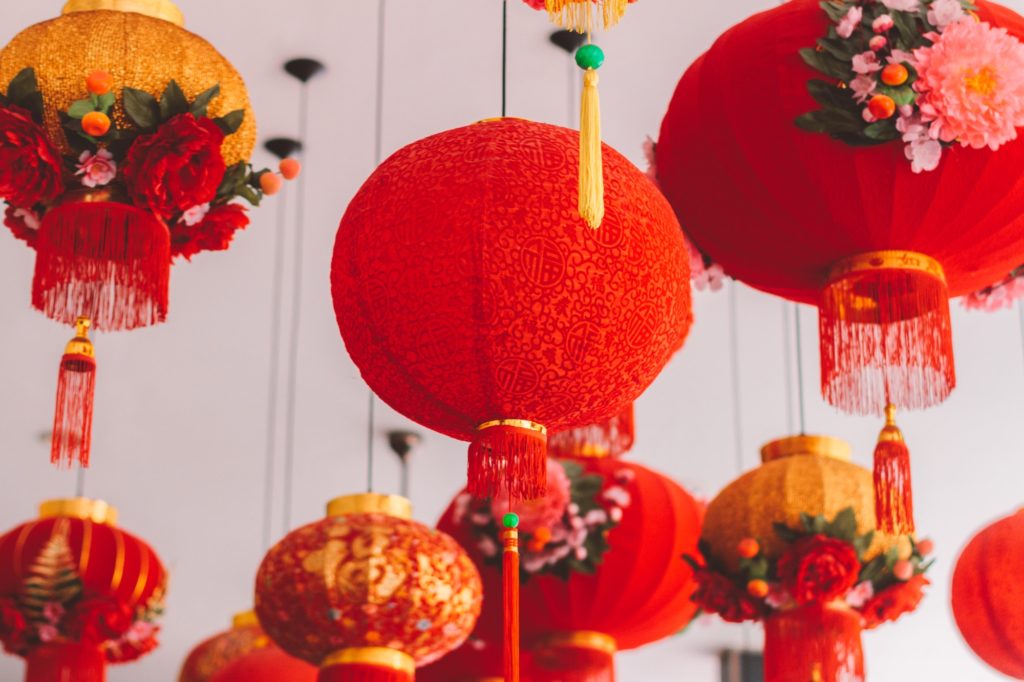
How much do you know about the Chinese community in Australia?
We all know about the 1.4 million Chinese tourists traveling to Australia annually and the money they bring in but have you thought of the local Chinese community in Australia and their strong contribution to the economy?
1.25 million currently reside in Australia. These ‘New Chinese’ in Australia generate billions in the travel industry just with their frequent domestic travels and flights to and from China.
How can you as an Australian business attract market share from this growing local Chinese community and best engage with the New Chinese?
We have a dedicated Cross-Cultural Insights team to help you tap into this growing market.
Contact us to learn more.
